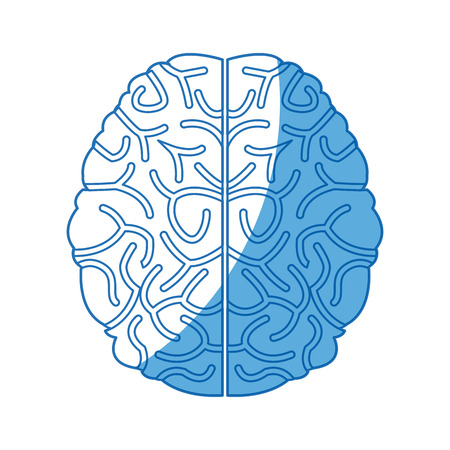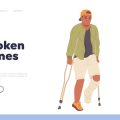Introduction to Occupational Therapy in Neurology
Occupational therapy (OT) is a cornerstone of rehabilitation for individuals with neurological disorders within the United Kingdom’s healthcare landscape. The National Health Service (NHS) places occupational therapists in a unique and essential position, integrating them closely with multidisciplinary teams to support patients living with conditions such as stroke, multiple sclerosis, Parkinson’s disease, and traumatic brain injury. Within the NHS, OTs work alongside physiotherapists, speech and language therapists, neurologists, nurses, and social workers, fostering a collaborative approach that is distinctively British in its structure and ethos. This collective effort ensures that care is patient-centred and holistically addresses not only medical needs but also social and environmental factors impacting daily life. British OTs are trained to assess both the physical and cognitive aspects of neurological impairment, developing tailored interventions that empower clients to maximise independence and quality of life. Their expertise spans acute hospital settings, community rehabilitation services, outpatient clinics, and increasingly, home-based care—reflecting the NHS commitment to accessible and inclusive support for all. This article delves into the best practices established within the UK context and presents real-world case studies to illuminate how British occupational therapists help people with neurological disorders reclaim their routines, roles, and sense of self.
2. Core British Best Practices in Neurological Occupational Therapy
Occupational therapy for individuals with neurological disorders in the UK is guided by a robust framework of evidence-based interventions, patient-centred planning, and adherence to National Institute for Health and Care Excellence (NICE) guidelines. This approach ensures that occupational therapists deliver care that is both effective and aligned with current best practices in the British healthcare context.
Evidence-Based Interventions
Within the UK, occupational therapists utilise interventions supported by strong research and clinical evidence. These may include functional task training, adaptive equipment provision, cognitive rehabilitation, and environmental modifications. The selection of interventions is informed by systematic reviews and clinical trials, ensuring that patients receive up-to-date therapeutic modalities tailored to their unique needs.
| Intervention Type | Examples | Evidence Source |
|---|---|---|
| Functional Task Training | Cooking, dressing, self-care routines | Cochrane Reviews, NICE CG162 |
| Cognitive Rehabilitation | Memory aids, attention tasks, problem-solving strategies | NICE CG137, RCP Guidelines |
| Adaptive Equipment Provision | Grab rails, one-handed kitchen aids | NHS Supply Chain Guidance |
| Environmental Modifications | Accessible bathrooms, home ramps | NICE NG108 Recommendations |
Patient-Centred Planning
A defining feature of British occupational therapy is a commitment to patient-centred planning. Therapists engage clients in meaningful goal-setting conversations, ensuring that therapy aligns with personal aspirations and lifestyle preferences. Collaboration extends to families and carers, recognising the importance of social support networks in recovery and daily functioning.
Key Elements of Patient-Centred Planning:
- Shared decision-making with clients and families
- Individualised goal setting based on what matters most to the person
- Regular review and adjustment of intervention plans according to progress or changing needs
- Culturally sensitive practice reflecting the diversity of British communities
NICE Guidelines in Practice
The application of NICE guidelines is central to UK occupational therapy practice for neurological conditions such as stroke, multiple sclerosis, Parkinson’s disease, and acquired brain injury. These guidelines provide a standardised approach to assessment, intervention selection, outcome measurement, and multidisciplinary collaboration. Compliance with NICE recommendations not only supports clinical effectiveness but also ensures equitable access to high-quality care across all NHS trusts.
Examples of Relevant NICE Guidelines:
- NICE CG162: Stroke rehabilitation in adults – emphasises early intervention and holistic assessment.
- NICE NG108: Multiple sclerosis management – addresses fatigue management and vocational support.
- NICE CG137: Epilepsy in adults – focuses on safety adaptations and psychosocial support.
- NICE NG71: Parkinson’s disease – recommends integrated therapy programmes including OT input.
This comprehensive framework reflects the high standards expected within British occupational therapy for neurological disorders, supporting both optimal patient outcomes and professional accountability throughout the country.

3. Assessment Tools and Methodologies Used in the UK
British occupational therapists (OTs) employ a robust set of standardised assessment tools to evaluate individuals with neurological disorders. The choice of assessments is guided by evidence-based practice, clinical guidelines, and a commitment to holistic, person-centred care. Among the most widely utilised tools are the Canadian Occupational Performance Measure (COPM), the Assessment of Motor and Process Skills (AMPS), and the Barthel Index. These instruments allow OTs to systematically measure clients’ functional abilities, occupational performance, and progress over time.
In addition to these core measures, British OTs frequently use condition-specific assessments such as the Rivermead Mobility Index for stroke survivors, and the Modified Ashworth Scale to assess spasticity in patients with conditions like multiple sclerosis or cerebral palsy. Cognitive screening is often conducted using tools like the Montreal Cognitive Assessment (MoCA), which has been validated for use across diverse populations in the UK.
Cultural sensitivity and diversity are fundamental considerations within British occupational therapy practice. Assessments are selected not only for their psychometric properties but also for their appropriateness within multicultural communities. For instance, the COPM is valued for its client-driven approach, allowing individuals from varied backgrounds to articulate their priorities and cultural values. Where necessary, interpreters are engaged and translated materials are used to ensure that language barriers do not compromise assessment accuracy or therapeutic rapport.
Outcome measurement is embedded throughout the intervention process, with OTs regularly reviewing and adapting goals in partnership with clients and families. This iterative process ensures that interventions remain relevant to each individual’s evolving needs, while upholding the principles of equity and inclusion that underpin British healthcare practice.
4. Case Studies: Stroke Rehabilitation
Occupational therapy (OT) for individuals recovering from stroke is a cornerstone of neurorehabilitation across the UK. British best practices emphasise person-centred approaches, multidisciplinary teamwork, and evidence-based interventions tailored to each patient’s needs. Below are real-life case examples that illuminate the complexity and collaborative nature of stroke rehabilitation in a typical NHS setting.
Case Example 1: Regaining Independence in Activities of Daily Living (ADLs)
Patient: Mr. L, a 68-year-old retired engineer from Manchester, experienced a left-sided ischaemic stroke resulting in right hemiplegia and mild aphasia. The OT team worked alongside physiotherapists and speech and language therapists to devise an integrated plan for his recovery.
| Intervention | Challenge | Outcome |
|---|---|---|
| Task adaptation (using one-handed techniques for dressing and grooming) | Initial frustration with new methods; reduced motivation | Regained independence in basic ADLs within 8 weeks; increased confidence |
| Cognitive retraining activities (memory aids, daily routines) | Mild cognitive impairment affecting sequencing tasks | Improved recall and task completion with external cues |
| Environmental modifications at home (grab rails, bath seat) | Access to funding and timely installation | Safer mobility and reduced fall risk post-discharge |
Case Example 2: Community Reintegration Post-Stroke
Patient: Mrs. H, a 54-year-old primary school teacher from Bristol, presented with right-sided weakness and visual neglect following her stroke. Her main goal was to return to her classroom role.
| Intervention | Challenge | Outcome |
|---|---|---|
| Workplace assessment and phased return-to-work plan | Anxiety about job performance; employer’s concerns regarding safety | Gradual increase in work hours; reasonable adjustments made by employer; successful return to teaching part-time after 12 weeks |
| Sensory re-education exercises and compensatory strategies for visual neglect | Lack of awareness of deficit impacting daily safety | Improved environmental scanning; reduced incidents of bumping into objects at home and work |
| Psychoeducation sessions for family involvement and support networks | Lack of understanding among family members about invisible disabilities post-stroke | Enhanced family support, reducing carer stress and promoting patient autonomy |
The Role of Multidisciplinary Collaboration in British Practice
Effective stroke rehabilitation within the NHS relies heavily on collaboration between occupational therapists, physiotherapists, speech and language therapists, nurses, social workers, and community services. Weekly multidisciplinary meetings ensure coordinated goal-setting, progress monitoring, and seamless discharge planning. This integrated approach—characteristic of British best practice—enables holistic care tailored to the unique needs of each stroke survivor.
5. Case Studies: Progressive Neurological Conditions
Occupational Therapy and Multiple Sclerosis (MS)
In the UK, occupational therapists play a pivotal role in supporting people with multiple sclerosis (MS) both in the community and hospital settings. OT interventions often begin with comprehensive assessments of physical, cognitive, and psychosocial needs. British best practices emphasise energy conservation techniques, adaptation of daily routines, and use of assistive technology. For example, a case from a London NHS Trust involved an OT working collaboratively with a client to introduce pacing strategies, adaptive kitchen equipment, and telehealth check-ins, significantly improving the individual’s independence at home.
Supporting Parkinson’s Disease Management
Occupational therapy for Parkinson’s disease in the UK is highly person-centred and multidisciplinary. OTs regularly conduct home visits to address challenges like bradykinesia, tremor, and fluctuations in mobility. Through tailored interventions such as cueing strategies for movement initiation and environmental modifications to reduce fall risks, British OTs help clients maintain meaningful activity participation. In one notable Manchester case study, an OT facilitated a joint goal-setting session with the client and their family, focusing on maintaining gardening as a leisure activity by introducing raised beds and adapted tools.
Motor Neurone Disease (MND): Maintaining Quality of Life
British occupational therapists are integral to MND care teams, particularly as the condition progresses rapidly and unpredictably. OTs provide ongoing assessment for seating, communication aids, and environmental controls—often working closely with local authority services for timely provision. In a recent NHS case example from Scotland, an OT supported a client by arranging rapid access to powered wheelchairs and voice banking technologies, while also training carers in manual handling techniques to ensure safety at home.
Integrated Approach Across Settings
The UK model of occupational therapy practice values seamless care transitions between acute hospitals and community environments. Regular multidisciplinary meetings—common across NHS Trusts—ensure that OTs can advocate for clients’ evolving needs as conditions progress. This continuity enables individuals living with MS, Parkinson’s disease, or MND to experience coordinated support whether they are at home or receiving inpatient rehabilitation.
Client Voice and Family Involvement
A defining feature of British OT best practice is the emphasis on collaboration with clients and families throughout the care journey. By prioritising shared decision-making and respecting cultural preferences unique to each UK region, occupational therapists foster autonomy and resilience even in the face of progressive neurological disability.
6. Family, Carer, and Community Involvement
In the British context, occupational therapy for neurological disorders is most effective when it extends beyond the individual to encompass family, carers, and the wider community. Collaborative working with families and carers is a cornerstone of UK best practice. Therapists often begin by involving significant others in assessment and goal-setting sessions, ensuring that support networks are engaged from the outset. This person-centred approach recognises that recovery and reablement are rarely solitary journeys; rather, they are collective efforts requiring ongoing communication and mutual understanding.
The Role of Family and Carers
Families and informal carers play a pivotal role in supporting day-to-day activities and facilitating independence at home. British occupational therapists routinely offer tailored education sessions, practical training, and emotional support to help carers understand neurological conditions such as stroke, MS, or Parkinson’s disease. This might include demonstrations on safe transfer techniques, advice on adaptive equipment, or strategies for managing cognitive challenges. Importantly, therapists are trained to recognise carer fatigue and signpost families to local respite services or peer support groups, acknowledging the reciprocal nature of care relationships.
Community and Voluntary Sector Partnerships
The voluntary sector is particularly strong in the UK, providing additional layers of support through charities like Headway, the Stroke Association, or local neuro-rehabilitation groups. Occupational therapists frequently liaise with these organisations to ensure service users can access community-based programmes—such as befriending schemes or adapted leisure activities—that foster social participation and reduce isolation. These partnerships are not only cost-effective but also culturally appropriate, reflecting the value placed on community cohesion within British society.
Best Practice Principles
British best practices emphasise early and transparent communication with all parties involved. Multidisciplinary team meetings often include family members, while written information is provided in accessible language tailored to cultural backgrounds. Therapists use structured tools like carer assessments and collaborative action plans to set shared goals and review progress regularly. Feedback mechanisms—such as satisfaction surveys or patient-led forums—are employed to continually refine service delivery.
In summary, optimal outcomes in occupational therapy for neurological disorders rely on proactive engagement with families, carers, and community partners. By embracing this holistic ethos rooted in British health and social care values, therapists empower individuals not just to recover functionally but also to reconnect meaningfully with their communities.
7. Future Directions and Professional Development
The landscape of occupational therapy for neurological disorders in Britain is continually evolving, shaped by both emerging research and the growing emphasis on evidence-based practice. Recent advances in neuroscience, digital health technologies, and personalised medicine are opening new avenues for intervention and rehabilitation. For instance, research into neuroplasticity is informing more tailored therapeutic approaches, while the adoption of virtual reality and telehealth platforms offers greater accessibility for patients across diverse settings.
Continuing professional development (CPD) remains at the core of maintaining excellence within British occupational therapy practice. The Royal College of Occupational Therapists (RCOT) underscores the importance of lifelong learning—practitioners are encouraged to engage regularly in reflective practice, peer supervision, and participation in specialist neurological forums. Attending national conferences, such as the RCOT Annual Conference, or enrolling in postgraduate modules ensures that therapists remain abreast of cutting-edge interventions and legislative changes impacting service delivery.
Looking ahead, collaboration between clinical practitioners, academic researchers, and service users will be vital in co-producing innovative solutions to meet complex neurological needs. There is a recognised shift towards more integrated care pathways within the NHS, promoting multidisciplinary teamwork and person-centred planning. This holistic approach not only enhances client outcomes but also supports sustainable services in a resource-constrained environment.
Moreover, there is increasing recognition of the value of service user involvement in shaping both research agendas and clinical guidelines. Patient-led initiatives and public consultations are helping to ensure that occupational therapy services align closely with real-life challenges faced by individuals with neurological conditions throughout the UK.
In summary, British occupational therapists working with neurological disorders face an exciting yet demanding future. By embracing innovation, committing to ongoing professional development, and strengthening collaborative networks, practitioners are well positioned to continue delivering world-class care tailored to local needs.


